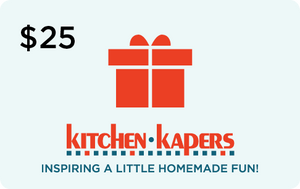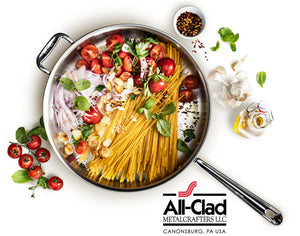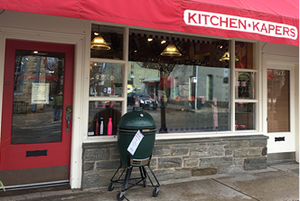Your Personal Set of Cookware
Introduction The best cookware collections are as unique as the cooks who own them. And though pre-packaged sets of your favorite brand are a cost effective and often an excellent place to start, it is unlikely that such a set will actually be complete given the individual nature of a cook's personal journey...After all, how could anyone know that in coming years you'd fall in love with Moroccan Cuisine, or learn to hand shape pasta, or go through a vegetarian phase? Certainly what you cook for yourself and for loved ones will ultimately give shape to your ideal collection of cookware. It will be acquired over years of culinary development and exploration; to refine what you know and learn what you don't. It will vary in shapes, sizes and materials and it will reflect your taste and ever-evolving repertoire. Use this buyer's guide whether you are starting out new, starting over, or looking for the next piece of your perfect collection.
The best cookware collections are as unique as the cooks who own them. And though pre-packaged sets of your favorite brand are a cost effective and often an excellent place to start, it is unlikely that such a set will actually be complete given the individual nature of a cook's personal journey...After all, how could anyone know that in coming years you'd fall in love with Moroccan Cuisine, or learn to hand shape pasta, or go through a vegetarian phase? Certainly what you cook for yourself and for loved ones will ultimately give shape to your ideal collection of cookware. It will be acquired over years of culinary development and exploration; to refine what you know and learn what you don't. It will vary in shapes, sizes and materials and it will reflect your taste and ever-evolving repertoire. Use this buyer's guide whether you are starting out new, starting over, or looking for the next piece of your perfect collection.The Essentials
If you are starting from scratch, take comfort in knowing that you can go pretty far with about 7 well-chosen pieces of cookware. These are the core pieces of most collections and will get the most consistent use because of their amazing versatility. For these pieces, it makes a lot of sense to buy the best quality that you can reasonably afford. Not only will your cooking be better, but with the proper care, you may never have to replace the pieces. That seems much better than re-purchasing a string of low quality, albeit inexpensive pots and pans.
Saute Pan or Frypan:
What it is- A pan with a wide flat bottom and low sides that can be straight or sloped. It will have one long handle and sometimes an auxiliary handle for larger diameter pans. Some are marketed with lids which is nice, although they are not typically necessary.
10" Saute Pan with stainless steel interior (frypan, skillet, sautoir, sauteuse):

Why you need it- the large surface area is ideal for the rapid, high-heat searing and cooking of tender meats, fish, vegetables and egg dishes. We recommend a pan with a stainless steel interior because it will not react with acidic foods or discolor sauces as other materials can. This added versatility means you can deglaze with wines, add tomatoes or use lemon juice to your heart's content! You can also shallow-fry chops and cutlets, pan-steam tender vegetables or rice and it works well for stir-fry techniques. Of course you can saute in it and create the integral sauces that help define the technique; it is also the pan to use for the most rapid reduction of liquids and sauces (just don't walk away from it for too long). If you choose a saute pan with an oven safe handle (highly recommended) it makes a respectable roasting or broiling pan for smaller items like game hens, whole carrots, potatoes, mushrooms, etc. Without doubt this type of pan is a true workhorse. So much so, the next pan on the list is also a saute pan...
9-10" Saute Pan with non-stick interior (frypan, skillet, sauteuse):

Why you need it- For certain foods, it just makes too much sense! Omelets (any eggs, really), pancakes, fried potatoes, seared fish (especially skin-on fish), fried rice, frittatas. So many foods become so much easier to prepare well with a non-stick pan. But just remember that different nonstick surfaces require a bit of specific care in how they are used. Some are not tolerant of hard utensils and hand washing is often the best practice. For that reason, many experienced cooks will reserve their non-stick pans for the times where they are most needed.
Sauce Pan:
What it is- A pot with a smaller diameter bottom and medium to high, straight sides. Sauce pans most often come with lids and a single long handle.
2-3 qt. Sauce Pan with Lid:

Why you need it- The highly versatile saucepan has a narrower bottom for moderate heat and taller sides that reduce the rate of evaporation. As the name suggests, it is ideal for making sauces but is more commonly used for poaching, boiling and reheating foods with a high-liquid content. The lid is used to trap heat and moisture for foods that require a longer and slower cooking time. Use this pan to make or heat soups and sauces; poach an egg or fish; steam, glaze or blanch vegetables; cook oatmeal or polenta; boil grains or potatoes...the list just goes on. The only real question is what size is best? This pan's only limitation is its size and it's probably a good idea to eventually have 2 or more saucepans. But until then, consider the number of people you are cooking for and choose accordingly. In an average household, we feel a 2 to 3 quart sauce pan will get used most often.
Dutch Oven:
What it is- A pot with a wide, flat bottom, squat sides with two sturdy handles and a lid. The bottom and sides should be heavy for very even and gentle heat transfer. Cast iron is ideal (unfinished or enameled are great), but other materials are used with very good results. Whatever material you choose, the entire pot and lid should be oven safe.
5 qt. Dutch Oven with Lid (braiser, soup pot):

Why you need it- If you ever intend to braise anything (pot roast, coq au vin, osso-bucco) or make a quantity of stews, you need a Dutch oven. Nothing else works as well. The dense material is able to reach and hold a high temperature to sear large cuts of meat and then gently transfer heat for the extended period of time needed to turn tough cuts into fork-tender treats. But this is no one-trick-pony! Especially in a roomy 5 qt. size or larger, it is excellent for any soup, boiling pasta or larger quantities of vegetables, risotto or mashed potatoes. And it's the only pot I reach for to deep fry because it holds a consistent temperature. Cast Iron pots are also very effective at baking crusty loaves of bread in the oven!
Cast Iron Pan:
What it is- The iconic heavy, thick, black iron pan with short sides and handle(s).
10" Cast Iron Pan, unfinished:

Why you need it- Because sometimes you need unrelenting, searing heat. Plus, it's easily the most affordable high quality pan you are likely to ever buy, and it will out-live all of us! Use it to quickly sear burgers, fresh tuna and steaks or to put a nice char on marinated chicken breast and vegetables. At lower temperatures it’s great for crusty grilled sandwiches, potato hash, skillet chili and even baking corn bread! With proper care and seasoning this pan will also develop an amazingly smooth nonstick surface that you will come to cherish. They are heavy (about 6 lbs. and up) and handwash only, but if you can manage that, cast iron is a joy to use.
Stock Pot:
What it is- a large pot with a medium-wide, flat bottom, tall sides with two handles and a lid. The base should be thick for very even heat transfer. Thinner materials will heat faster, but "hot spots" which result from uneven heat are likely to lead to scorching of ingredients even when liquid is in the pot, thereby limiting its versatility.
8 qt. (or up to 12 qt.) Stock Pot with Lid:

Why you need it- Unfortunately, not many people make homemade stocks. This pot remains on the essentials list for 2 major reasons. The first reason is for pasta (the 5 qt. Dutch oven works, but it's not ideal). An 8 qt. or larger stock pot is roomy enough to keep lasagna sheets, raviolis or any pasta intact and cook them quickly. The second reason is that sooner or later you will need to make a lot of something! It might be chili, potato salad or tomato sauce, but inevitably, a need will arise.
Roasting Pan:
Roasting Pan (with optional, but recommended rack):

Back to top
Making It Your Own
The essentials are a great start for maximum versatility with the fewest possible pieces, but don't be afraid to tailor these first pieces to your individual needs. If you are not into braises but love soba noodles, consider swapping the Dutch oven for a lighter soup pot or 4 qt. sauce pan. Would you rather perfect your family-sized lasagna than a leg of lamb? Hold off on the roasting pan and choose a great stoneware baker instead. You will find that slightly different pieces might make a better fit for you while still offering at least some flexibility. But if you really want to start moving your set from "the cookware essentials" to a collection that's "essential to you", consider these popular pieces too.
Griddle:
What it is- A large, rectangular and smooth cooking surface that is sized to fit over two burners on your range. There is often a small recess or reservoir to trap oils and a very shallow lip at the edge. Since these are larger in size, there should be a handle at each end. Some griddles are reversible with a grill pan on the opposite side. Griddles are usually made from anodized aluminum with a nonstick coating.
Why it might be for you- Do you love big weekend breakfasts? Nothing beats the practicality of a big griddle for stacks of pancakes, French toast, eggs or hash browns. It's also ideal for making classic diner fare like grilled sandwiches, cheese steaks, burgers and quesadillas. Or, if you typically cook for a lot of people, a griddle cooktop is very useful for searing lots of chicken, salmon and other foods quickly. A griddle is also key to preparing chicken tandoori and other skewered hors d' oeuvres.
Stoneware bakers and pots:
What they are- This is a wide category of cooking vessels including glazed or natural clay, ceramic and stoneware shaped into dishes, casseroles and pots of all sizes and colors.
Why they might be for you- These practical pieces are the perfect bakeware for casseroles, baked pastas, enchiladas and anything that gets cooked in an oven. They heat very evenly and gently so foods won't burn and the attractive colored glazes are beautiful enough for the table and can bring a sense of style to your kitchen. Glazed ceramic baking dishes make good roasters and unglazed clay roasting pots produce the most deliciously juicy and browned roasts you can imagine.
Grill Pan:
What it is- a pan similar in shape to a fry pan with short sides, but with a raised grill surface. They can be round or square, but the best are made from enameled or natural cast iron.
Why it might be for you- Because grilled steaks are just too good not to bring inside! This heavy grill pan adds a flavorful sear and allows fats to drain away from marinated shrimp or chicken, filet mignon and boneless pork chops or chicken. It's also great for press-grilling panini sandwiches!
Wok:
What it is- a versatile pan with a round bottom and sides. Also known as a stir-fry pan. The best are made from carbon steel and typically have one long handle. The Wok excels as a high heat specialist, but performs well for many other methods of cooking as well.
Why it might be for you- If you love stir-fried foods and want to learn how to master the technique, this is your best pan, but you must take care to find one that will remain stable on your flat stovetop. It's ideal for using a small amount of oil to rapidly sear small cuts as they are moved around the pan. It also makes a good deep fry pan, and sometimes woks even come with a draining rack that fits over the inside edge. Chinese cooks also use them for stocks, soups, sauces and to create steam for bamboo steamer baskets that get stacked on top. If you spend some time to learn the wok's unique characteristics, it's likely you will enjoy using it for much more than stir-fry!
Windsor pan (reduction pan):
What it is- a saucepan with outwardly sloped sides and a long handle, usually sized between 1-2 qts. "Saucier pans" are similar in design and function, but with curved bottoms and often shorter sides. The shape encourages a quick escape of steam for the rapid but controlled reduction of liquids. For this reason, a lid is not typically used with a Windsor pan. Stainless and copper are the best materials.
Why it might be for you- The method of refining stocks into flavorful sauces requires some work. In a professional kitchen, the position of saucier is revered and particularly respected and held by cooks with artistry, experience and a technical understanding of the cooking process. If you wish to learn the secrets of a saucier, this pan will help speed the vital reduction process without compromising your control over the results. Its wider diameter opening also lends well to thorough whipping, thickening and finishing. And of course, it will also do the all-purpose work of a straight-sided saucepan.
Braiser:
What it is- A wide bottom pan with curved or straight sides of low height. The pan is typically built with two loop handles and a domed lid. Pans this shape are also marketed as "casserole" and "cassoulet" pans. Sizes can range from a small 2 qts. and up, though 3-6 qts are most popular. Cast iron braisers work well, but if you want to maximize versatility and ease of use, choose stainless clad aluminum, copper or anodized aluminum.
Why it might be for you- Because braising does not end with pot roast. Braisers are smaller, lighter and more streamlined than Dutch Ovens. They have a relatively lower height that is easier to get in or out of the oven without rearranging racks. They are ideal for the combination cooking of small to medium sized items such as whole fish or larger fish fillets, pork tenderloin, eye rounds, stews and much more. The lidded pans are also well-shaped for paella and other rice dishes (fabulous when cooked along with pork or chicken braises), and on the stovetop, they are great for steaming shellfish like mussels and clams. Without the lid, larger sizes (4qts. and up) can also be used for roasting and making a quick chili.



